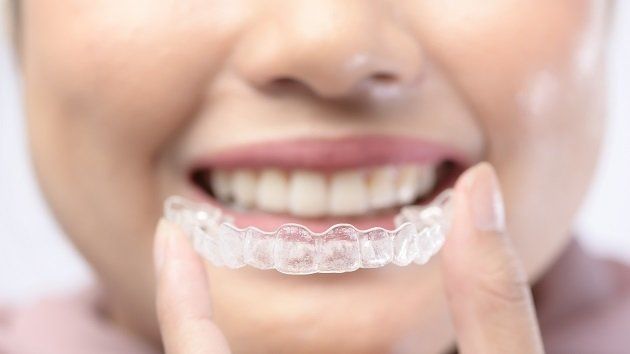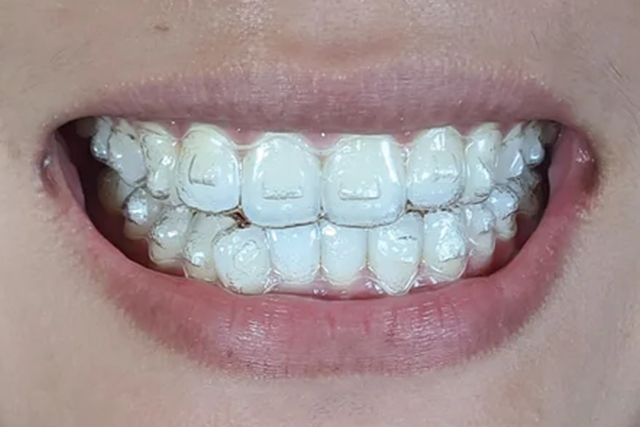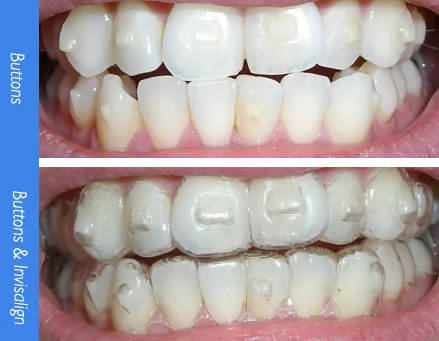How Invisalign Works: Your Overview to Clear Aligners and Their Effectiveness
How Invisalign Works: Your Overview to Clear Aligners and Their Effectiveness
Blog Article
Invisalign vs. Standard Braces: Which Alternative Is Right for You?
When considering orthodontic therapy, the selection between Invisalign and conventional braces presents several important factors that warrant cautious assessment. Invisalign provides a discreet alternative with detachable aligners, while standard braces provide an extra noticeable yet effective option for serious misalignment.
Review of Treatment Alternatives

In comparison, typical dental braces include metal brackets and cords that are adhered to the teeth. This technique applies continual pressure in time to accomplish alignment. While effective for complicated orthodontic problems, traditional dental braces need normal sees for modifications and can position obstacles in maintaining dental hygiene as a result of the trouble of cleansing around braces and wires.
Both alternatives have their benefits, and the choice often depends upon details dental conditions, way of life preferences, and person compliance. Eventually, consulting an orthodontic expert is crucial for identifying one of the most suitable treatment plan customized to individual needs. Recognizing the subtleties of each choice can dramatically influence the general success of orthodontic treatment.
Visual Considerations
A substantial element influencing the option in between Invisalign and traditional dental braces is the visual appeal each therapy offers. Invisalign aligners are crafted from clear plastic, making them essentially undetectable when put on.
In contrast, standard dental braces include metal braces and cables, which can be extra obvious. While advancements in orthodontic modern technology have actually resulted in the development of smaller sized brackets and colored elastics, traditional braces still keep a more obvious account. For some people, the exposure of braces might discourage them from looking for necessary treatment.
Eventually, the choice in between Invisalign and conventional braces may rest on individual preferences pertaining to aesthetics. Clients who prioritize discernment typically favor Invisalign, while those who are less worried concerning exposure may choose standard braces. Comprehending the visual ramifications of each choice is critical for making a notified choice that aligns with one's lifestyle and preferences.
Comfort and Convenience

In regards to ease, Invisalign aligners are removable, allowing patients to appreciate their favorite foods without restriction and maintain optimal oral health. Cleaning and flossing are streamlined, as the aligners can be taken out during these routines, whereas conventional braces call for cautious maneuvering around brackets and cords.
In comparison, typical dental braces necessitate routine modifications, making them less practical for those with hectic routines. In general, the convenience and benefit of Invisalign make it an enticing selection for several people seeking orthodontic therapy.
Therapy Duration and Performance
While both Invisalign and typical braces are effective in fixing oral imbalances, the duration of treatment can differ significantly between the 2 options. Commonly, Invisalign treatment can take anywhere from 12 to 18 months, depending upon the intricacy of the case. The clear aligners function by gradually changing teeth into their wanted positions, and regular follow-ups with an orthodontist aid make certain development stays on the right track.
In contrast, standard braces often call for a longer commitment, typically varying from 18 months to three years. This results from their fixed nature and the usage of brackets and wires, which can be extra effective for serious misalignments and intricate situations (Invisalign). The therapy effectiveness of standard braces is well-documented, as they permit for accurate modifications and higher control over tooth activity
Ultimately, the choice in between Invisalign and conventional dental braces may hinge on both the expected treatment duration and the particular oral concerns at hand. Consulting with an orthodontist is essential, as they can offer customized recommendations based on specific demands, making sure the selected method lines up with wanted durations and end results.
Expense Contrast and Insurance Choices
Price plays a significant duty in the decision-making procedure for people taking into consideration orthodontic treatment, whether going with Invisalign or standard dental braces. Generally, the cost of Invisalign varieties from $3,000 to $8,000, while standard braces usually set you back between $2,000 and $6,000. Elements influencing these expenses include the intricacy of the case, the period of treatment, get more and geographical area.
Insurance coverage can dramatically influence out-of-pocket expenses. Many oral insurance policy plans provide partial insurance coverage for orthodontic treatments, yet the specifics can differ commonly. It is critical for patients to assess their insurance policy policies to establish the level of coverage for either choice. Generally, standard dental braces might be extra frequently covered by insurance coverage strategies contrasted to Invisalign, the original source which some insurers categorize as a cosmetic procedure.
In addition, numerous orthodontic methods supply versatile layaway plan, making both therapy alternatives much more accessible. People should ask about possible financing options and price cuts for ahead of time settlements. Examining the total expense, consisting of insurance policy benefits and payment plans, is vital for making an educated choice that straightens with both visual preferences and spending plan factors to consider.

Verdict
In recap, the option in between Invisalign and typical dental braces hinges on numerous variables, consisting of aesthetic choices, convenience, therapy duration, and cost. Invisalign supplies a very discreet, detachable option that facilitates dental health and dietary versatility, while conventional braces may be a lot more ideal for intricate oral concerns and commonly come at a reduced rate point. Ultimately, consultation with an orthodontist is vital to evaluate individual situations and determine the most proper therapy alternative for accomplishing optimal oral placement.
When thinking about orthodontic therapy, the selection between Invisalign and conventional braces offers a number of crucial elements that merit careful examination.Contrasting Invisalign and traditional dental braces discloses distinct treatment choices for orthodontic modification.While both Invisalign and conventional braces are reliable in fixing dental misalignments, the duration of therapy can vary considerably between the two options.Expense plays a considerable duty in our website the decision-making procedure for individuals thinking about orthodontic therapy, whether opting for Invisalign or typical dental braces.In summary, the option between Invisalign and standard dental braces hinges on multiple elements, including aesthetic preferences, convenience, therapy duration, and cost.
Report this page